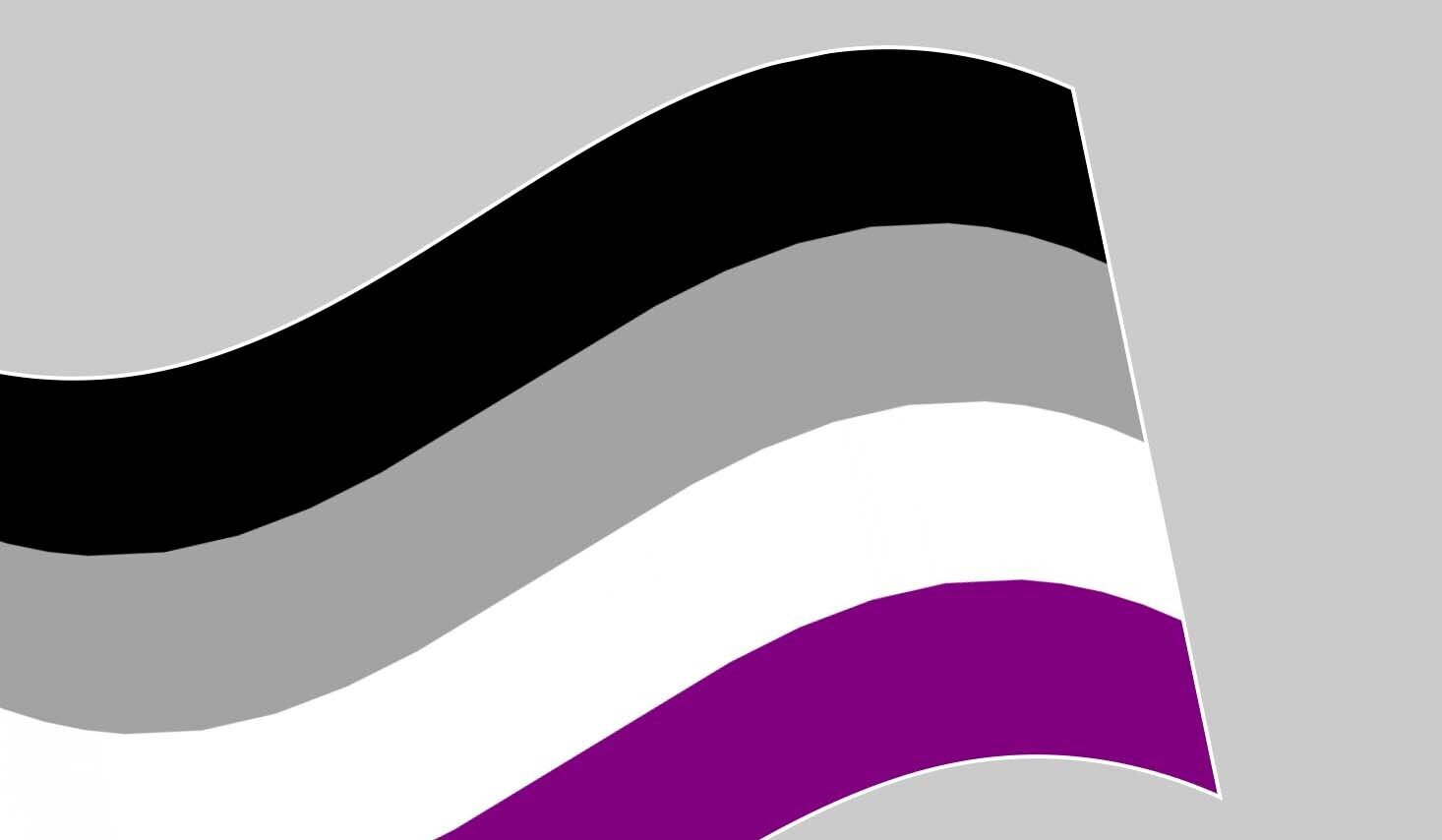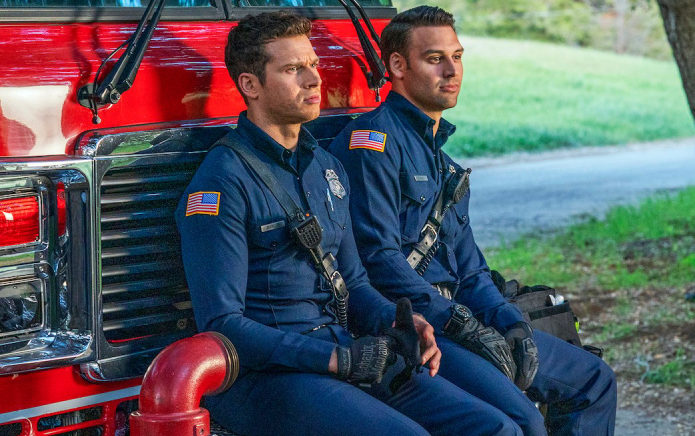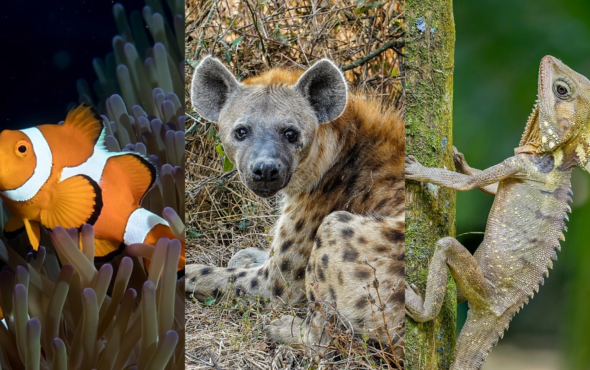
As you know, there’s a vast array of sexual orientations that an individual may identify with or feel a particular connection to.
While those who are not immersed in LGBTQ+ culture and the community will only recognise a select few due to the lack of representation in mainstream media and news – such as gay, lesbian, bisexual and transgender – more and more terms have emerged over the years to better represent the experiences and emotions of queer individuals, such as pansexual, asexual, polysexual and demisexual, among others.
There will be some you’re aware of, whether that’s through a friend, your own experiences or researching online, and others you might not be familiar with. Here, we break down the meaning behind asexuality and its origins, as well as its accompanying Pride flag.
What does asexual mean?
Just like heterosexuality, homosexuality, bisexuality, pansexuality and so forth, asexuality – often shortened to ‘ace’ – is a sexual orientation and those who identify as such can identify with any gender identity.
Although it’s usually defined as the lack of sexual attraction to others, and unwillingness to act upon others in a sexual manner, not everyone will agree on the definition of asexuality.
Like some of the aforementioned sexualities, asexuality is relatively new to public discourse. While asexuality is rare, constituting approximately 1% or less of the population, it’s not a new concept. Asexual people have been around since, well, the dawn of time.
In a piece for Stonewall, Michael Doré from The Asexual Visibility & Education Network suggests that asexuality was recognised much later than other LGTBQ+ identities because of the “lack of organised opposition, unlike other parts of the spectrum”.
He wrote: “Obviously, while gay sex was criminalised relatively recent history in many countries including the UK, there were never any laws prohibiting not having sex (though the pressure on aces to have sex within marriage, and more generally to have sex based on peer pressure, is very real).”
Do asexual people explore romantic and sexual relationships?
Some asexual people may be interested in exploring romantic relationships, while others may not. It’s a vast spectrum. Also, there are some asexual people who do engage in sexual activity, whether that’s for their partner’s pleasure or to have children.
One common misconception about asexual people is that they are unable to experience romantic attraction, which is false. There are many asexual people who do identify with a romantic orientation, who uses prefixes to specify who they’re interested in romantically such as hetero-, homo-, bi- and pan-.
For example, if someone is a homoromantic asexual, they are romantically attracted to individuals of the same gender, but not sexually attracted.
Of course, it varies from one individual to another. There are also many asexual people who don’t feel romantic attraction, and the term they use is ‘aromantic’.
However, AVEN states: ”Most sexual people may not view their orientation that way, and may simply combine their sexual and romantic attractions into one characteristic if they’re aligned.
“Asexual people often feel the need to specify both sexual and romantic attractions to make it clear what drives them and what they’re seeking from other people.”
Again, asexuality is a spectrum and it’s important to not make assumptions based on one person’s experience.
What is the difference between asexuality and celibacy?
Asexuality and celibacy should not be confused with one another.
Celibacy is a choice to abstain from sex and practicing individuals may not necessarily identify as asexual. They may still experience sexual attraction but make the decision to refrain from engaging in sexual activity, whether that’s down to moral or religious reasons.
“The distinction between asexuality and celibacy/abstinence is that asexuality doesn’t come out of a personal decision,” says AVEN, “it’s just who we are.”

What is the difference between asexuality and demisexuality?
Asexuality and demisexuality are widely considered to be on the same spectrum due to the lack of sexual desire.
However, asexuality is the complete or near-complete absence of sexual attraction to anyone (of course, this depends on the individual), while demisexual people are capable of feeling sexual interaction but only after an emotional bond is formed.
Where does the word asexual come from?
The term uses the Greek prefix “a-” which means “not” or “a lack of”.
‘Asexual’ was first recorded in the late 1700s and was originally used in biology to describe organisms, particularly plants, that had no sex organs.
Magnus Hirschfield was one of the first physicians to reference asexuality. In his 1896 book Sappho and Sokrates, Hirschfield says: “There are individuals who are without any sexual desire (‘Anästhesia sexualis’).”
Alfred Kinsey, the creator of the Kinsey scale – which is used in research to describe a person’s sexual orientation based on a scale from 0-6 – also added the “X” category in 1948 to Sexual Behaviour in the Human Male for those with “no socio-sexual contacts or reactions”.
He elaborated on this further in 1953’s Sexual Behaviour in the Human Female.
Although Kinsey didn’t define the “X” as asexuality, it has since been recognised as such.
However, scholar Justin J. Lehmiller explained that the Kinsey scale “emphasized a lack of sexual behaviour” in comparison to the modern definition, which “emphasizes a lack of sexual attraction”.
What does the asexual flag look like?
The asexual Pride flag came to fruition after AVEN held a contest on their forum to replicate their official logo.
The organisation asked designers to create a flag for those who identify as asexual, and the winner was announced on 30 June 2010 as AVEN user “standup”.
The flag consists of five colours: black for asexuality; grey for the grey area between sexual and asexual; white for non-asexual partners and allies; and purple for community.
Are there any celebrities who publicly identify as asexual?
With only 1% of the population identifying as asexual, there aren’t as many out and proud asexual celebrities when compared to other identities in the LGBTQ+ community.
However, there are a few celebrities who have been open such as American stand-up comedian and actress Janeane Garofalo, who once said she doesn’t “have a fear of intimacy, I have sort of a genuine lack of interest.”
In an interview with PhillyMag, she addressed those who confused her for being gay by stating: “I take it as a compliment. It makes me far more interesting than an asexual atheist. If you want to imbue me with that – it’s not an insult.”
New Zealand novelist Keri Hulme, author of The Bone People, said in 2007: “It is part of who I am: the major impact is that I am not– and never have been – interested in sex.
“It was more a slow realisation that I was different from most people. By my mid-teens, I’d realised that what was of great moment and interest to other young people – their sexuality and relationships – didn’t intrigue me in the slightest.”
Other notable asexual figures include Alice Oseman, Caitlyn Jenner, Emilie Autumn, Paula Poundstone, Satsuki Nakayama, Tim Gunn and TJ Klune.
In recent years, British model and writer Yasmin Benoit has become one of the most prominent asexual activists in the country.
She has continuously used her platform to tackle harmful myths and stereotypes regarding asexuality and aromanticism, having worked with the BBC, AVEN and Sky News.
To mark Ace Week, Yasmine shared a video on her social media channels on the best way to be an ally to the asexual community, which you can view below.
View this post on Instagram
For more information about The Asexual Visibility & Education Network, visit their website here.



